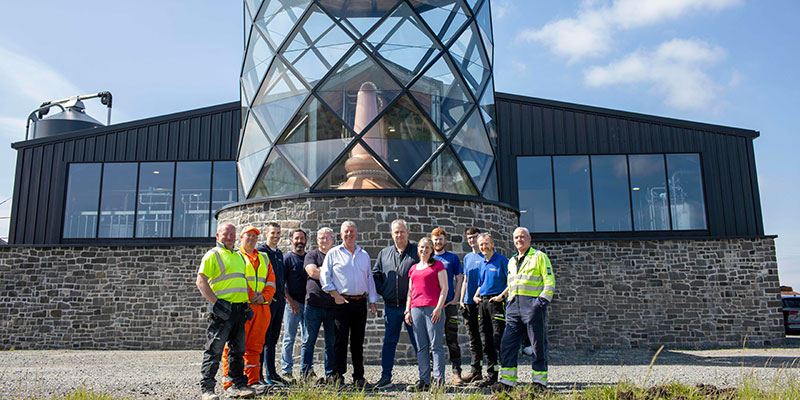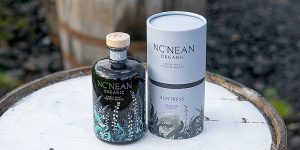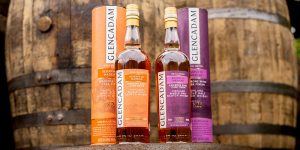Production has started at Scotland’s newest single malt whisky distillery, Benbecula Distillery in the Outer Hebrides.
The distillery is the brainchild of businessman Angus MacMillan, who developed the multi-million-pound distillery in a disused salmon farming processing plant at Gramsdale at the northern end of Benbecula, which lies between North and South Uist, off the west coast of the Scottish mainland. A glass-walled extension in the form of a lighthouse houses a copper pot still and the distillery’s design and distilling process incorporate low-carbon technologies.
Bere barley, grown on Angus’s croft and others nearby, fertilised with seaweed from the shoreline, is among the key ingredients of the new whisky. The malt will be kilned over fires laid with peat and foraged heather – a revival of a rare malting technique thought to be unique in Scotland today and from a recipe last used by distilleries in the 19th century.
Angus has enlisted the services of master distiller Brendan McCarron to create the spirit.
With a career spanning more than 20 years, Brendan previously worked as head of maturing whisky stocks at the Glenmorangie Company. His experience also includes spells as manager at Oban Distillery and as master distiller with Distell.
Around 350,000 litres of whisky will be produced at Benbecula Distillery annually, with bourbon and sherry casks used in the maturation. Gin will also be produced and the company’s own rum will be available from the distillery.
Angus A MacMillan commented: “After quite a journey over the past few years, it’s fantastic to see the first spirit flowing at Benbecula Distillery.
“There’s nowhere quite like Benbecula and we are proud to be able to play a part in sustaining our island, creating new, skilled jobs and producing a single malt whisky which will capture the essence of this unique place.”
Brendan McCarron added: “The spirit produced at Benbecula will be classically maritime in style; smoky on the nose, with salty and sweetly peated notes. This will be achieved using light to medium peated malted barley, so that the smoke does not dominate and allows fruity and floral notes to shine through.”




